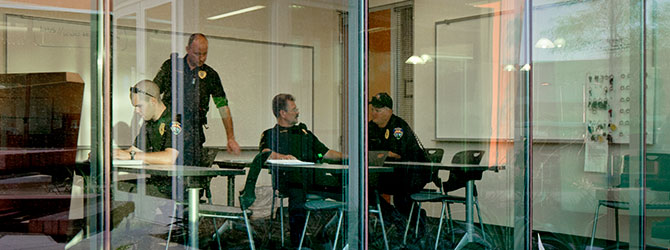As it relates to emergency management, the term unified command can mean many things. It can be a concept, a process, a goal, and most importantly, a predictor of a successful multi-organizational response to an emergency. Originally developed by the military to coordinate high-level command arrangements between the armed forces, over time the concept of unified command began to be adopted by local, state, and federal public safety organizations, and ultimately by private-sector firms.
Coordinating the Disaster Recovery Effort
The National Incident Management System (NIMS) was published by the U.S. Department of Homeland Security in 2004 to define and standardize a set of organizational structures in an effort to better facilitate local, state, and federal response to domestic incidents. Included within this set of organizational structures is the Incident Command System (ICS), which defines a series of management concepts, tools, and processes that can be implemented in response to a specific incident. It's within ICS that unified command is defined as "providing guidelines to enable agencies with different legal, geographic, and functional responsibilities to coordinate, plan, and interact effectively."
While the concept of unified command as defined in ICS provides an ideal approach for a coordinated response, it does not provide a method to actually facilitate coordination between different agencies that may have very different cultures and traditions. For this reason, there have been challenges implementing unified command structures throughout the public safety industry. While different agencies may share very similar overarching missions, they frequently operate in parallel, rather than integrating and sharing knowledge, situational awareness, and core competencies. There have been many instances of these types of challenges throughout the country when it comes to unified command structures involving fire and police organizations.

Establishing Efficient and Effective Unified Command Structures
Some local jurisdictions have recognized these challenges and adopted formal strategies to overcome them. For example, some jurisdictions have implemented several different activities that require a small level of effort that have resulted in big organizational improvements. These activities include:
- Joint Training – Fire and police staff routinely provide the incident command and unified command onboarding training in a joint setting, so that police and fire trainees are provided direct insight into the requirements, processes, and expectations of their counterparts. Knowing each other's capabilities and what each has to offer the other have instilled a sense of teamwork and shared perspective when it comes to incident response activities.
- Buy-in from the Top – Upper management from both fire and police organizations have communicated throughout their reporting structures that unified command is important, provides operational benefits, and should be used routinely in incident responses whether they be small and isolated or large and complex.
- Informal Gatherings – In an effort to build and maintain relationships between the two organizations, fire and police staff routinely gather outside of response situations, to share meals and engage in other social activities. For example, the World Police and Fire Games is an international sporting event that allows public safety officers from around the world to come together and showcase their athletic excellence, while being honored and celebrated. This provides a great opportunity for fire and police to further build relationships.
- "The Handshake" – When arriving at the scene of an incident, fire and police incident commanders are directed to find one another and make direct contact by shaking hands. This act immediately sets a collaborative tone and provides an early opportunity to share information about the incident and discuss and develop priorities for the response.
Not only have these straight forward activities been foundational in establishing efficient and effective unified command structures, they have created a positive feedback loop that allows for additional improvements beyond those already realized.